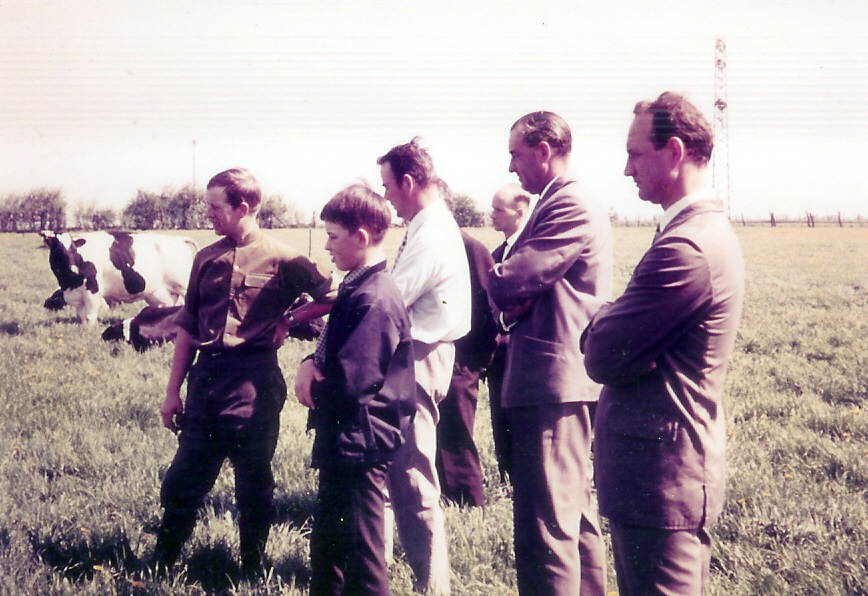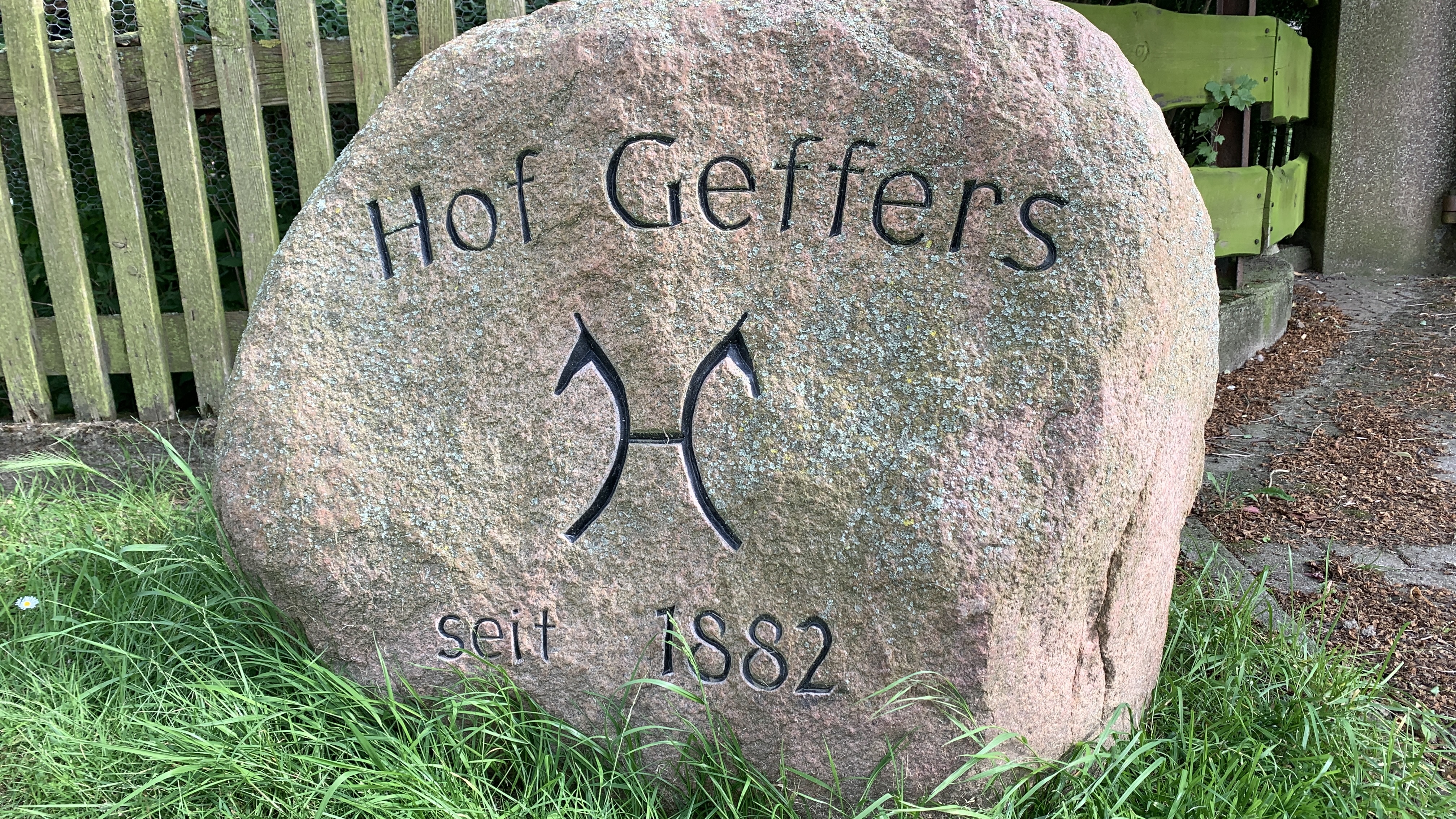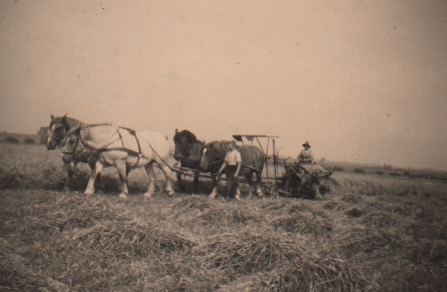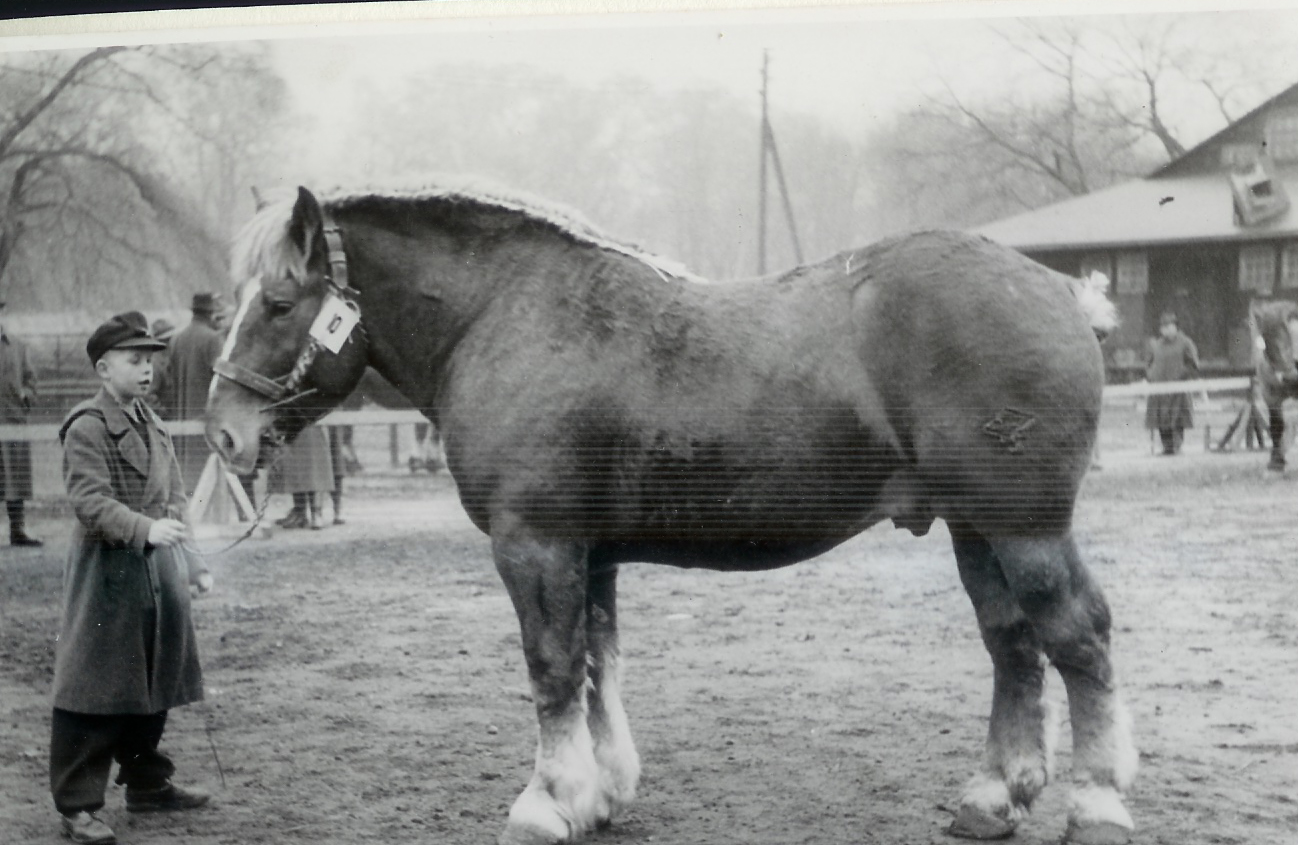Conrad Geffers buys a farm in Rötzum in 1882
The full farmer Conrad Geffers from Klein Solschen (house number 32) buys the farmstead at Nordstraße 12 in Rötzum from Conrad Heineke for 10,555 Thaler in 1882. The farmstead includes 87 acres and 69 rods of arable land around the village of Rötzum. According to today's figures, this corresponds to an area of 21.85 hectares. Cows, pigs and poultry provide income from farming in addition to the arable land.
Son Robert Geffers I takes over the farm and starts breeding horses
It is not known exactly when the farm was handed over. However, around the turn of the century (1900), great-grandfather Robert introduced cold-blooded breeding on the farm. Four to five large mares were not only kept in the stables for breeding, but also had to do the heavy farm work. The cold-blooded mares were harnessed for breeding and driven to the breeding station in Groß Düngen.
Robert Geffers II takes over the farm in 1924 and continues to expand horse breeding
In these difficult times before and after the Second World War, attempts were made to further develop old traditions. A stallion was borrowed from the former Osnabrück State Stud for cold-blooded breeding (also in the region). It was not least thanks to the right stable management that this capital stallion managed to successfully inseminate 29 out of 30 mares presented from the surrounding area in one year. The first stallion of his own came to the farm in 1950. Male offspring from this breeding program were sold to the Osnabrück State Stud, to the stallion depot of the GDR and to private owners. Numerous premiums were won with the fertile mares at DLG shows and still document the successful breeding beyond the district borders today. The most outstanding evidence of the breeding of special horses at this time is the oil painting of the mare "Calata", who stood on the Geffers farm for 14 years. Later, in the post-war period, there was still just enough money to be made from breeding successes to make the effort worthwhile. After that, the cold-blooded horses were replaced by modern tractors and tractors as part of the technologization of agriculture.
Technologization of agriculture: Robert Geffers III takes over the fortunes of the farm in 1965


When Robert Geffers III took over the farm in 1965, the chapter on cold-blooded horse breeding had already come to an end. Tractors and other modern equipment made work in the fields easier and made cold-blooded horses "superfluous". The farm now concentrates on arable farming and dairy cattle breeding. The size of the farm increased to 200 acres (50 ha) through land leases and up to 20 "Schwarzbunte" dairy cows and their offspring were kept. Once again, breeding "skills" were used to build up a herd whose performance was regularly awarded prizes at regional district cattle shows. For my father, animal welfare and the quality of the milk product were paramount. Maximum hygiene with species-appropriate husbandry. On the dairy's board of directors, he also campaigned for years for his colleagues to be paid appropriately for this agricultural service.
Horse breeding on the farm has also changed. Lighter warmbloods, Hanoverians, are now bred. Up to 4 broodmares(state premium mares) were successfully bred for equestrian sport. A special focus was placed on the breeding of show jumpers. Over 50 offspring from 13 mares were bred and sold by 2003. Many of these sport horses found their way into show jumping through a good rider, some of them up to the highest class (over 1.4m).




